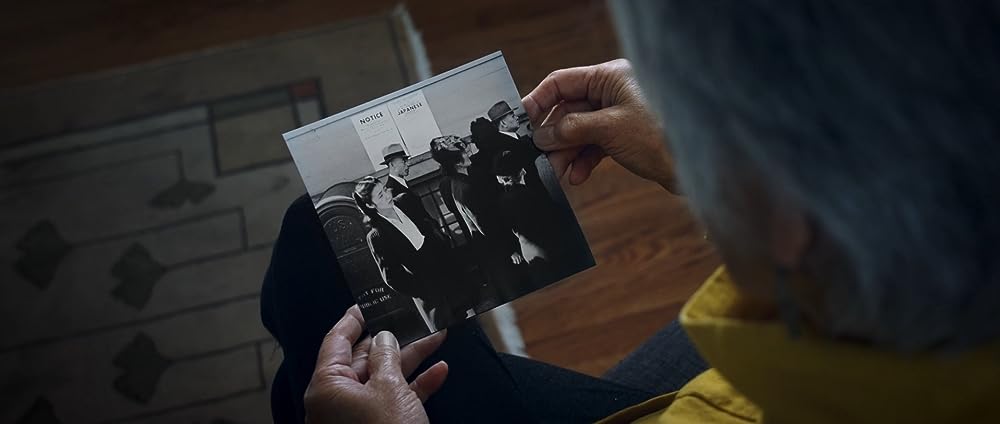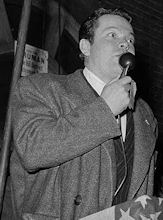What’s it like to be a child prodigy? Few of us know, and that’s probably a good thing.
“American: An Odyssey To 1947,” the latest documentary from Danny Wu (“Square One: Michael Jackson”), begins with a detailed biography of Orson Welles, the “enfant terrible” who took first New York theater, then radio, and finally Hollywood by storm in the 1930s and ’40s.
Through the use of archival photos, audio and video, plus commentary and analysis by people who knew or have studied the principles, Wu takes us through Welles meteoric and sometimes miraculous rise. From the precocious child of a troubled marriage in Kenosha, Wisconsin, through the private and progressive Todd School in Woodstock, Illinois, Welles showed unusual imagination, an ability to lead others, and an almost fanatical desire to cut his own path through the world.
Wu uses inventive animation to represent some of the scenes being described, which adds to the unusual nature of his film.
One gets the impression that Welles led a charmed life: even when there were downturns in his luck, they led to ever higher successes. It is said that there is no such thing as luck – that instead those who are well prepared are in a position to take advantage of a turn in events, and perhaps that is true of Welles. He clearly had, from an early age, a bravado and ability to think and act rapidly that always stood him in good stead.
Among the many contributors to the exploration of Welles and his career is Simon Callow, whose many activities include actor and director. He has written a three-volume biography of Welles, published over over the period from 1995 to 2015.
Another presenter is the late John Houseman, who in a sense “discovered” Welles as he acted on Broadway in a smallish part in “Romeo and Juliet.” Houseman, who later became estranged from Welles, was in charge of the WPA effort to further Black theater at the time, which not only led to ground-breaking black versions of Shakespeare, but also to the formation of Welles’ Mercury Theater and radio program, Mercury Theater of the Air.
It was on radio that Welles mounted his infamous interpretation of H.G.Wells’ “War of the Worlds.” The notoriety from that event led to his contract with RKO in Hollywood to do three pictures. The first of these, with no studio strings attached, was his magnum opus, “Citizen Kane.” The rest, as they say, is history.
At this point, Wu’s documentary begins to shift. He introduces two new historic figures. One is Howard Kakita, who explains he is thrd generation Japanese American.
When Howard was very young, his family traveled to Japan to visit his ailing grandfather. His grandparents lived in Hiroshima. His parents returned to the US to settle their affairs, in preparation for resettling in Japan. However, Pearl Harbor and WWII intervened. Howard was stuck in Japan while his parents lost everything and were interred in the US. At the end of the war, Howard, his brother, and his grandparents miraculously survived the atom bomb, even though they were within one mile of the detonation. Later, in 1947, Howard returned to the US and grew up there.
Another individual, Isaak Woodard, a Black American, is also introduced. He served during the war, but upon returning was cruelly abused by the police for resisting the Jim Crow laws, and blinded by a local sheriff.
The stories of these two men are included because their lives directly or indirectly intertwine with that of Welles. Kakita left the land of his birth as Welles was reaching his zenith. He returned as a defeated Welles was entering a 20-year self-imposed exile from the US. Woodard suffered at the cruel hands of immoral laws and evil people. Welles fell under the control of similar people in the FBI, mainstream media, and congress. In addition, Welles heard of Woodard’s plight and sought justice for the man – further infuriating a political structure that had no room for those who questioned the status quo.
This is an excellent summary of Welles and his place in American culture during the first part of his life. A similar treatment of the remaining 38 years of his life would be welcome, also intertwined with events of that period.
“American: An Odyssey To 1947 is enjoyable fare for anyone interested in Orson Welles and the creation of biographical documentaries.

Note: The three films Welles made for RKO were “Citizen Kane” (often regarded as the greatest movie ever made), “The Magnificent Ambersons” (mutilated by the studio, but also considered an incredible achievement) and “Journey into Fear” (a noir adventure of note but inferior to the other three). Welles had been fired by RKO by the time the third film was released.
Runtime: One hour, 42 minutes
Availability: In theaters Sept. 8 and online Sept. 12
. . .
Join us on Facebook at
http://www.facebook.com/itsjustmovies!
